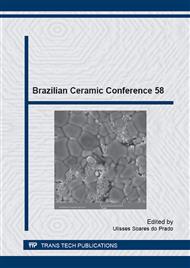p.535
p.539
p.545
p.549
p.553
p.558
p.564
p.570
p.576
Feasibility of Using Clay Ceramic Residue in Substitution of Washed Sand for Concrete Manufacturing
Abstract:
Residue materials accumulated in the working yards of building construction in Brazil are commonly discarded into landfill areas, which represents a non-sustainable procedure. To revert this situation, a possible remediation could be the selection of these residues to be recycled as useful materials in the same building construction. In the present work, clay ceramic wastes, such as broken bricks and tiles, obtained as civil construction residues, were used in substitution of washed sand currently applied in concrete fabrication. It was found that a 30% substitution presented, within the standard deviation, a smaller strength to the concrete with comparable trace of sand, but still complying with the norm.
Info:
Periodical:
Pages:
553-557
Citation:
Online since:
June 2015
Price:
Сopyright:
© 2015 Trans Tech Publications Ltd. All Rights Reserved
Share:
Citation:


